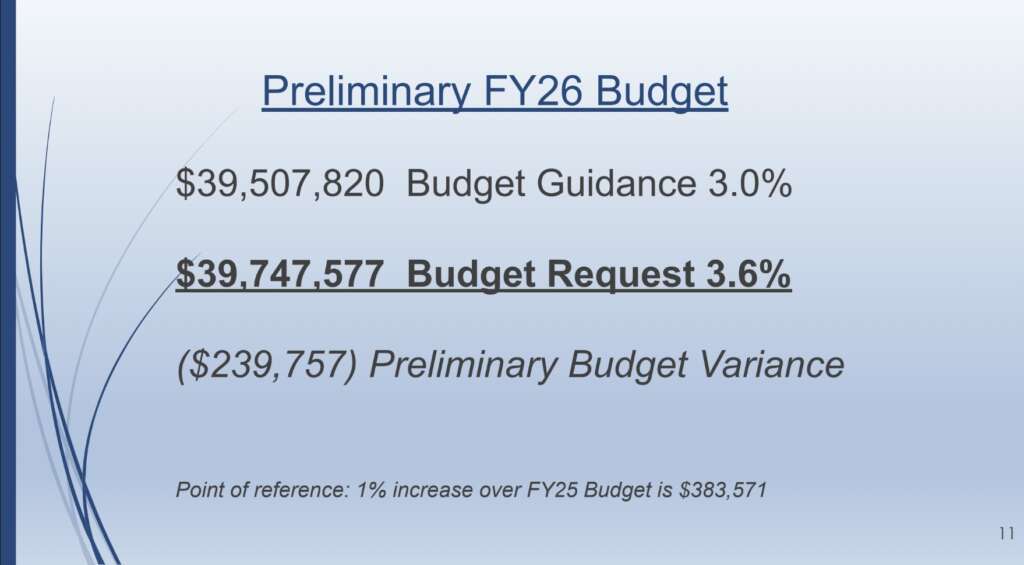Share This Article
What’s Going On:
- The Lincoln-Sudbury School Committee met on Tuesday, December 3. The preliminary Fiscal Year 2026 budget was presented. There’s an initial variance between the proposed budget and budget guidance of approximately $240,000.

- The Town of Sudbury provided 3.0% guidance. The Town of Lincoln provided 2.5% guidance. The FY26 apportionment ratio presented was a very slight shift toward Lincoln at 12.76% and Sudbury at 87.24%. “Apportionment” is a fancy word for how members of a regional school district agree to divvy up the bill.
- Lincoln-Sudbury leadership repeatedly emphasized that this budget is very preliminary. Union contracts are still being negotiated, and there could be changes on the expense or revenue sides of the budget.
- There was discussion among the committee about declining enrollment. Several members emphasized the importance of maintaining the breadth and depth of the program of studies while experiencing enrollment declines.
- Chair Ravi Simon asked about potential cuts to federal funding. Kirsteen Patterson, the Director of Finance and Operations, said the district has braced and prepared for that possibility, but it remains unknown if that will come to pass. (1:06:00)
Why It’s Important:
- Superintendent Andrew Stephens emphasized that even as enrollment may decline, costs can still increase for a variety of reasons, ranging from fixed costs to growing student needs, to significant increases in the cost of services like out-of-district placements. He reminded the committee that there have previously been reductions in the district as enrollment has decreased by about 300 students in the last five years, but those are often offset by increasing needs elsewhere.
- Kirsteen Patterson, Director of Finance and Operations, added that regional districts have obligations that are unique in terms of the “municipal-type costs” they need to carry in their budget, such as health insurance and pension systems. She added:
“Even though it seems like the continuum is going in the wrong way, we are holding it pretty well for that declining enrollment. We still have not seen a significant decrease in Chapter 70 funding, so we have been responsive and responsible in providing what can in looking for in efficiencies. Again, by shifting our teaching assistants to the I.D.E.A. grant so that we have more capacity within that grant. Those are all of the types of efficiencies that we continue to include and incorporate each budget cycle.”
(39:00)


